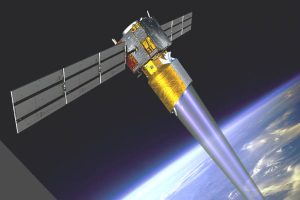A £5 million award from the UK Space Agency will allow Northumbria University to take forward research to build a new satellite communications system, setting the scene for Northumbria to launch the UK’s first university-led multi-satellite space mission. The funding announcement will allow the University to move forward with its prototype work on this new laser-based system, which has the ...
Military/Aerospace Electronics
Electronics related to Military/Aerospace
BAE Systems launches FalconWorks division for air sector R&D
BAE Systems has launched a new FalconWorks division for its air sector business, described as a centre for advanced research and development to deliver “a range of cutting-edge combat air capabilities for the UK and its allies”. FalconWorks will work with BAE’s partners – academia, research organisations, SMEs and national governments. Example digital technologies it will be involved with include ...
NASA Valkyrie humanoid robot heads for testing in Australia
G’day humanoid robot. Nasa is sending its robotic system, dubbed Valkyrie, down under to complete its testing, with the energy company Woodside Energy in Perth, Western Australia. It is part of a research-sharing Space Act Agreement, explains the space agency, which plans to use a Valkyrie robot to develop remote mobile dexterous manipulation capabilities, for remote caretaking of uncrewed and ...
Initiative aims to drive foreign direct investment for UK space sector
The UK Space Agency is funding a new initiative to secure foreign direct investment (FDI) opportunities for the UK. It will be supporting the Department for Business and Trade and various space cluster representatives across the nation. Basically, it is to encourage startups and established companies from around the world to set up, or expand, their space operations within the ...
Leonardo to develop Nasa’s infrared sensors to find habitable planets
NASA has awarded a $4m contract to the University of Hawaii to develop – in collaboration with Leonardo, Markury Scientific, and Hawaii Aerospace – ultra-sensitive infrared sensors to help observe distant planets and their atmospheres. Specifically, it is the university’s Institute for Astronomy (IfA) that will be working on the technology, along with the Southampton offices of Leonardo, with the ...
Northumbria Uni, Lockheed Martin detect nanojets with ML algorithms
Northumbria University is collaborating with Lockheed Martin for research into the role played by ‘nanojets’ and the reconnection of the Sun’s magnetic field lines for generating the Solar Corona’s heat. In a bid to gather more evidence about how often nanojets occur and how they impact coronal heating, Northumbria PhD student Ramada Sukarmadji, under the supervision of Dr Patrick Antolin, ...
A fiery end to Aeolus, and its Chelmsford-made image sensor
ESA has begun the controlled destruction of its Aeolus global wind-measuring satellite. Launched in 2018, the 1.3 tonne satellite has already worked 18 months longer than its planned three year mission, but is now running out of orbit-maintaining fuel. Matter and radiation released by recent solar flares and coronal mass ejections have temporarily increased drag in space, and ESA is ...
Space mission sees XCAM imaging thermospheric winds impacting GPS
XCAM is collaborating with UCAR (University Corporation for Atmospheric Research) to observe the global thermospheric winds that impact radio and GPS communications. The space mission – dubbed WindCube – will involve the first wind measuring interferometer to be carried on a small 6-U LEO CubeSat, with XCAM providing an advanced imaging camera system. The Northampton-based company designs and manufactures highly ...
OroraTech signs Spire for eight-satellite wildfire detection constellation
Spire Global, the space services company with offices in Glasgow, has signed an agreement with OroraTech, a specialist in space-based thermal intelligence, to build, launch and operate an eight-satellite constellation. The constellation is described as the first dedicated to tracking and monitoring wildfires. Once operational, it will feature real-time detection capability, continuous situational awareness and predictive insights to help detect ...
36 e2v sensors on ESA’s Euclid space mission
The Teledyne e2v team designed and manufactured the 36 sensors for the visible wavelength camera on the Euclid spacecraft, due to be launched on Saturday, which aims to determine the properties of dark energy and dark matter. Euclid is designed to explore the evolution of the dark universe. Over six years, it will make a 3D-map of the universe by ...
 Electronics Weekly Electronics Design & Components Tech News
Electronics Weekly Electronics Design & Components Tech News









